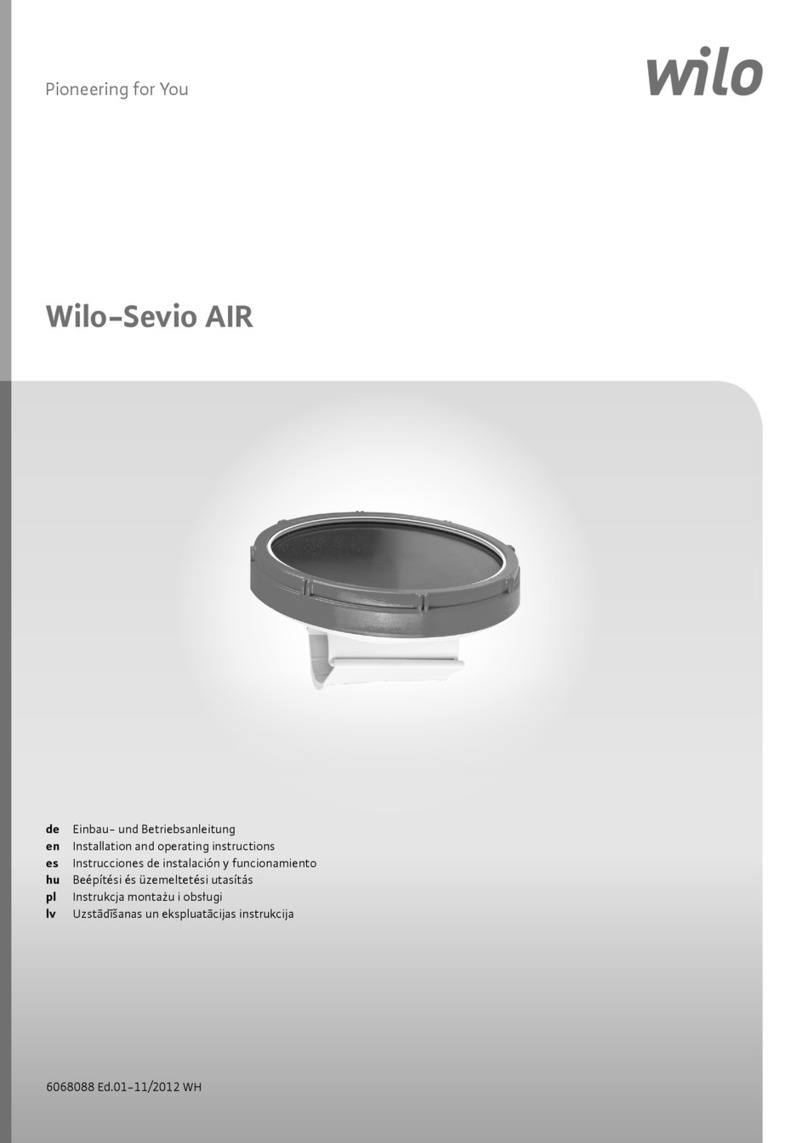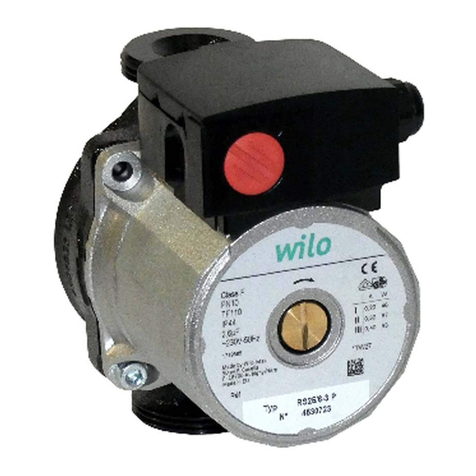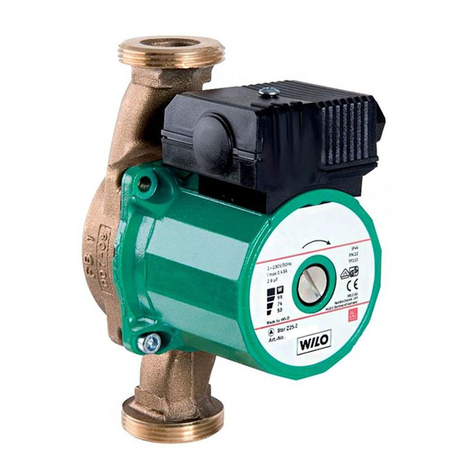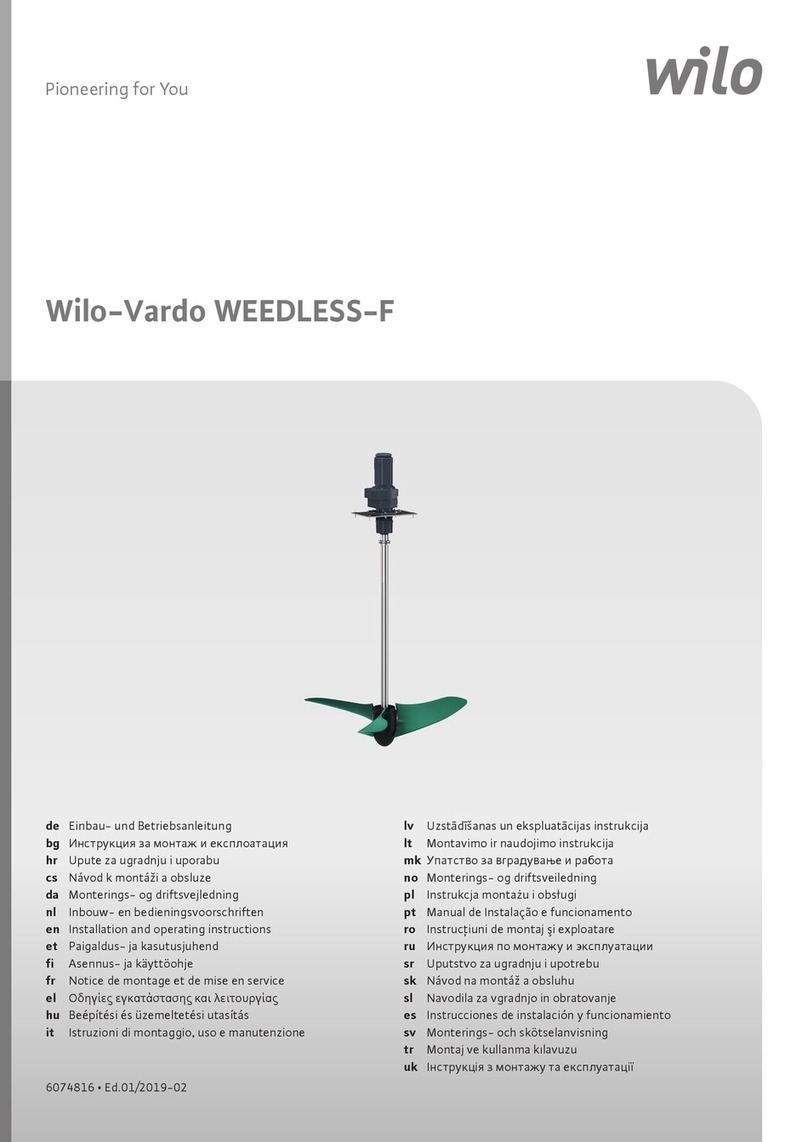
en
Installation and operating instructions Wilo-EMU TR/TRE 212 ... 326-3 3
Table of contents
1 General information ................................................................................................................................................................. 5
1.1 About these instructions ..................................................................................................................................................................................5
1.2 Copyright ............................................................................................................................................................................................................5
1.3 Subject to change..............................................................................................................................................................................................5
1.4 Exclusion from warranty and liability..............................................................................................................................................................5
2 Safety......................................................................................................................................................................................... 5
2.1 Identification of safety instructions................................................................................................................................................................5
2.2 Personnel qualifications....................................................................................................................................................................................7
2.3 Electrical work ....................................................................................................................................................................................................7
2.4 Monitoring devices ............................................................................................................................................................................................7
2.5 Use in fluids hazardous to health ....................................................................................................................................................................8
2.6 Transport.............................................................................................................................................................................................................8
2.7 Installing/dismantling........................................................................................................................................................................................8
2.8 During operation ................................................................................................................................................................................................9
2.9 Maintenance tasks.............................................................................................................................................................................................9
2.10 Operating fluid ...................................................................................................................................................................................................9
2.11 Operator responsibilities...................................................................................................................................................................................9
3 Application/use....................................................................................................................................................................... 10
3.1 Intended use.................................................................................................................................................................................................... 10
3.2 Improper use.................................................................................................................................................................................................... 10
4 Product description................................................................................................................................................................ 10
4.1 Construction.................................................................................................................................................................................................... 10
4.2 Monitoring devices ......................................................................................................................................................................................... 12
4.3 Operating modes............................................................................................................................................................................................. 13
4.4 Operation with frequency converter............................................................................................................................................................ 13
4.5 Operation in an explosive atmosphere ........................................................................................................................................................ 13
4.6 Rating plate...................................................................................................................................................................................................... 13
4.7 Type key........................................................................................................................................................................................................... 14
4.8 Scope of delivery............................................................................................................................................................................................. 14
4.9 Accessories ...................................................................................................................................................................................................... 14
5 Transportation and storage................................................................................................................................................... 15
5.1 Delivery............................................................................................................................................................................................................. 15
5.2 Transport.......................................................................................................................................................................................................... 15
5.3 Storage ............................................................................................................................................................................................................. 16
6 Installation and electrical connection .................................................................................................................................. 16
6.1 Personnel qualifications................................................................................................................................................................................. 16
6.2 Operator responsibilities................................................................................................................................................................................ 16
6.3 Installation types............................................................................................................................................................................................. 17
6.4 Installation ....................................................................................................................................................................................................... 17
6.5 Electrical connection...................................................................................................................................................................................... 23
7 Commissioning........................................................................................................................................................................ 26
7.1 Personnel qualifications................................................................................................................................................................................. 27
7.2 Operator responsibilities................................................................................................................................................................................ 27
7.3 Direction of rotation monitoring .................................................................................................................................................................. 27
7.4 Operation in an explosive atmosphere ........................................................................................................................................................ 28
7.5 Before switching on........................................................................................................................................................................................ 29
7.6 Switch on and off............................................................................................................................................................................................ 29
7.7 During operation ............................................................................................................................................................................................. 29
8 Shut-down/dismantling......................................................................................................................................................... 30
8.1 Personnel qualifications................................................................................................................................................................................. 30
8.2 Operator responsibilities................................................................................................................................................................................ 30
8.3 Shut-down....................................................................................................................................................................................................... 30
8.4 Removal............................................................................................................................................................................................................ 31































